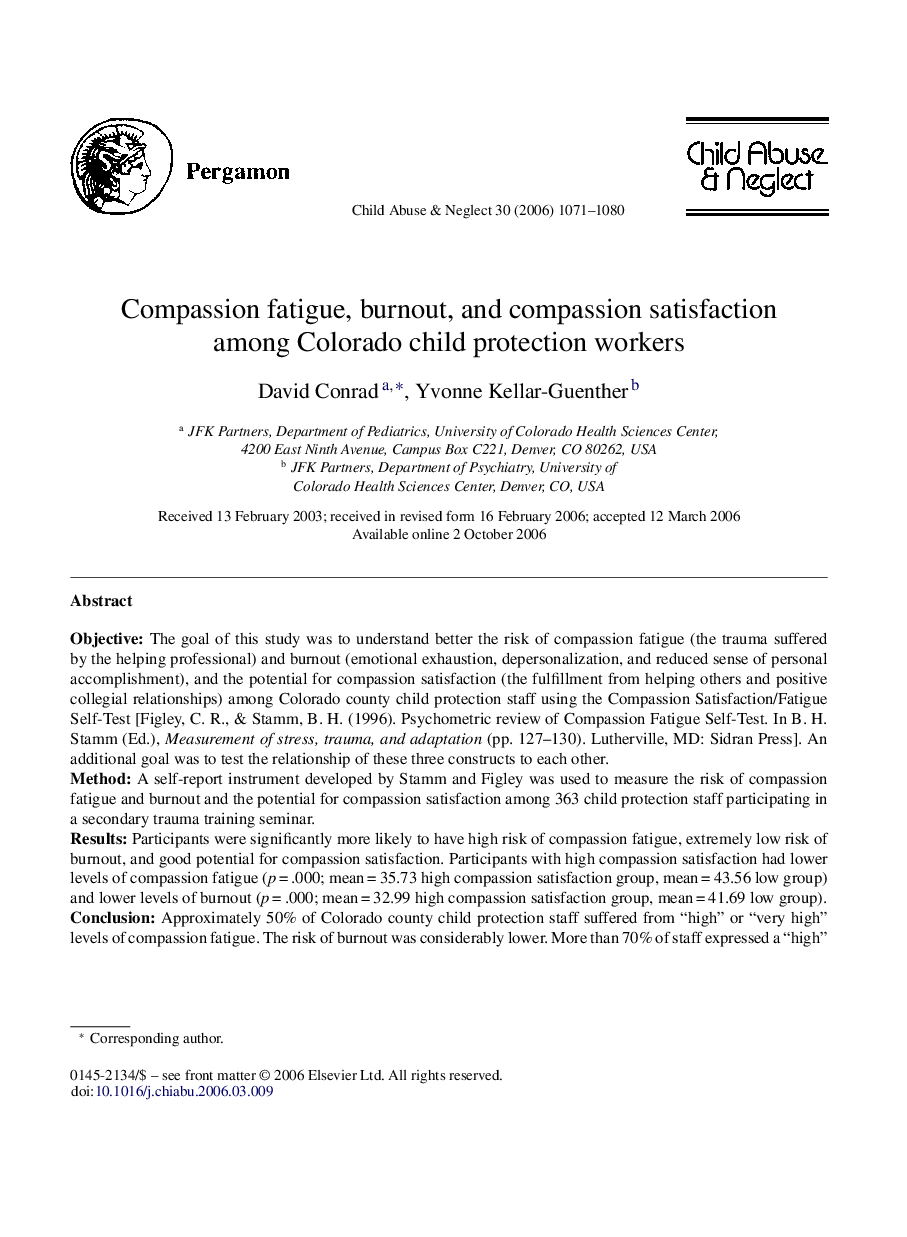| Article ID | Journal | Published Year | Pages | File Type |
|---|---|---|---|---|
| 345462 | Child Abuse & Neglect | 2006 | 10 Pages |
ObjectiveThe goal of this study was to understand better the risk of compassion fatigue (the trauma suffered by the helping professional) and burnout (emotional exhaustion, depersonalization, and reduced sense of personal accomplishment), and the potential for compassion satisfaction (the fulfillment from helping others and positive collegial relationships) among Colorado county child protection staff using the Compassion Satisfaction/Fatigue Self-Test [Figley, C. R., & Stamm, B. H. (1996). Psychometric review of Compassion Fatigue Self-Test. In B. H. Stamm (Ed.), Measurement of stress, trauma, and adaptation (pp. 127–130). Lutherville, MD: Sidran Press]. An additional goal was to test the relationship of these three constructs to each other.MethodA self-report instrument developed by Stamm and Figley was used to measure the risk of compassion fatigue and burnout and the potential for compassion satisfaction among 363 child protection staff participating in a secondary trauma training seminar.ResultsParticipants were significantly more likely to have high risk of compassion fatigue, extremely low risk of burnout, and good potential for compassion satisfaction. Participants with high compassion satisfaction had lower levels of compassion fatigue (p = .000; mean = 35.73 high compassion satisfaction group, mean = 43.56 low group) and lower levels of burnout (p = .000; mean = 32.99 high compassion satisfaction group, mean = 41.69 low group).ConclusionApproximately 50% of Colorado county child protection staff suffered from “high” or “very high” levels of compassion fatigue. The risk of burnout was considerably lower. More than 70% of staff expressed a “high” or “good” potential for compassion satisfaction. We believe compassion satisfaction may help mitigate the effects of burnout.
